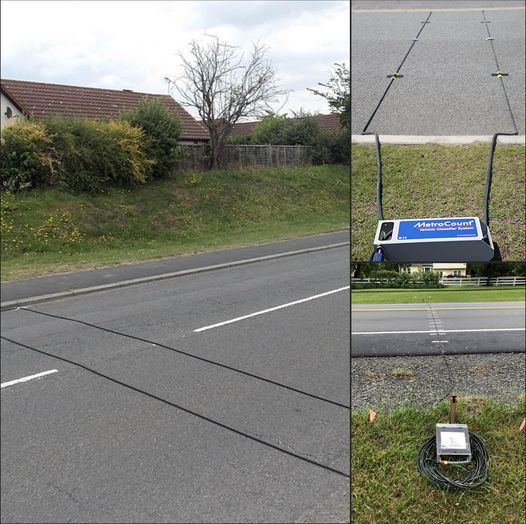If You Ever See Black Cables Stretching Across The Road, This Is What You Should Do

As you drive along the highways and byways of your daily commute, you might have noticed black cables stretched across the road. They might seem like an odd sight, almost as if they are silent sentinels guarding the pavement. But what exactly are these mysterious tubes, and what role do they play in the world of transportation? The answer lies in the realm of traffic management and data collection.
These black cables are, in fact, portable traffic counters carefully placed by transportation authorities for research and analysis. Local agencies primarily use them to gather valuable insights into road usage and traffic patterns. With over 12,000 of these counters scattered across the state, they provide essential data that influences the planning and development of our road networks.
Understanding the Mechanism Behind the Black Tubes
The technology that powers these unobtrusive rubber tubes is elegantly simple yet highly effective. Each time a vehicle’s tires pass over the tube, it triggers a burst of air, which in turn sets off an electrical signal recorded by a counter device. This clever pneumatic system tracks the volume of vehicles traveling over a particular stretch of road within a set period. By analyzing the intervals between these air bursts, transportation agencies can glean insights into peak traffic congestion periods.
When deployed in pairs, these tubes can provide even more detailed data, such as vehicle classification, speed, and direction. This information is crucial as it forms the foundation for decisions on road signage, speed limits, and how transportation budgets are allocated. It allows municipalities to fine-tune their traffic management strategies, ensuring that road systems operate efficiently and safely for all users.
Road Tubes: More Than Just Counting
Though the primary function of these pneumatic tubes is to count traffic, their role goes far beyond simple enumeration. These unassuming devices serve as multi-dimensional data collectors, playing a crucial role in improving our road infrastructure and ensuring smooth traffic flow.
According to the U.S. Department of Transportation, the operational process behind these tubes involves a burst of air generated when a vehicle’s tires pass over the rubber tube. This triggers an air switch that sends an electrical signal to the counter device. The tubes can be set up in two main configurations: temporary and permanent. Temporary setups, which may last only a day, provide quick insights into traffic dynamics, while permanent installations offer continuous, in-depth monitoring.
Transportation agencies position these black cables strategically in areas with minimal interference, often targeting straight stretches of road for optimal data collection. When using a single tube, they can track vehicle counts and the time gaps between vehicles. When using paired tubes, they are able to capture even more detailed information, such as axle count, direction, and speed.
These tubes also come into play when urban road management faces particular challenges. For example, if local residents raise concerns about speeding or shortcutting, these tubes can be deployed to gather data and verify these claims. The insights gathered contribute to the development of transportation budgets and the implementation of effective solutions for the community.
Conclusion
The next time you encounter those mysterious black cables on the road, take a moment to appreciate the critical role they play behind the scenes. These inconspicuous devices are quietly gathering data that influences the decisions shaping our transportation systems. More than just simple counters, they are silent observers that track the flow of traffic and provide valuable information that helps guide the future of our road networks. So, the next time you drive over these tubes, remember that they are more than they appear—they are the pulse of our evolving transportation landscape.